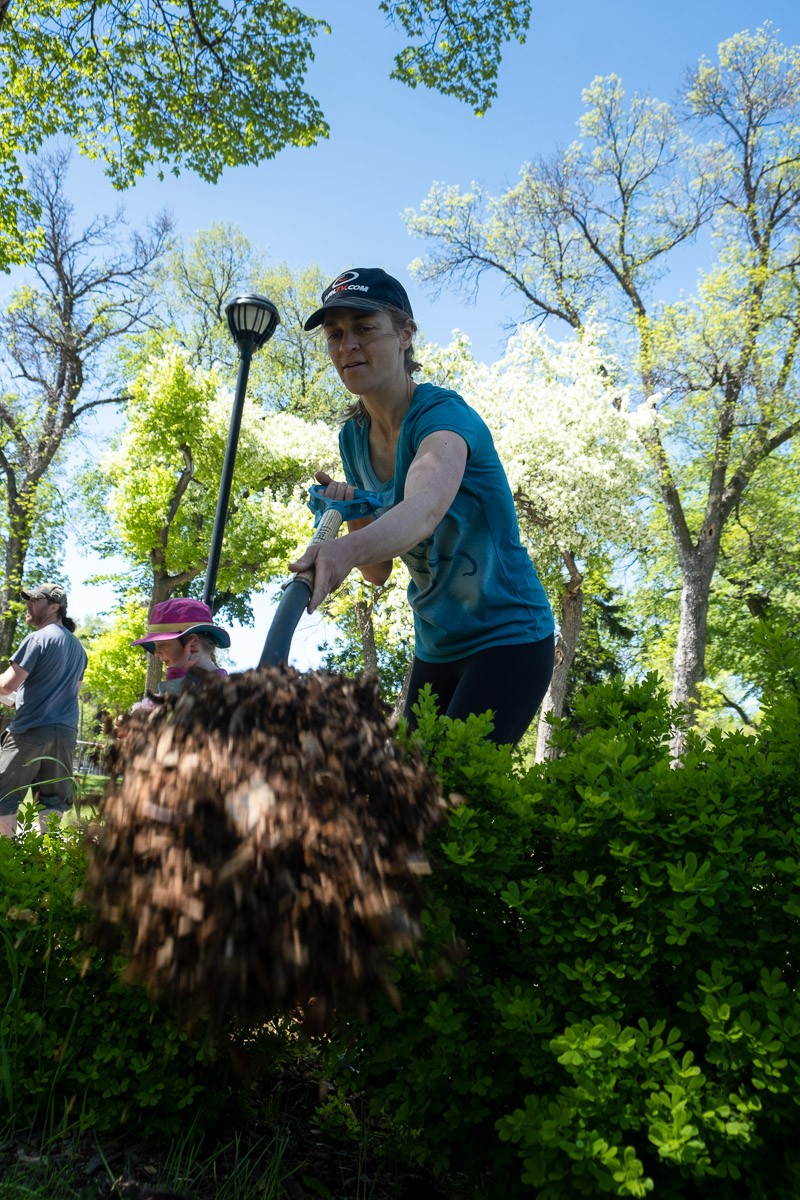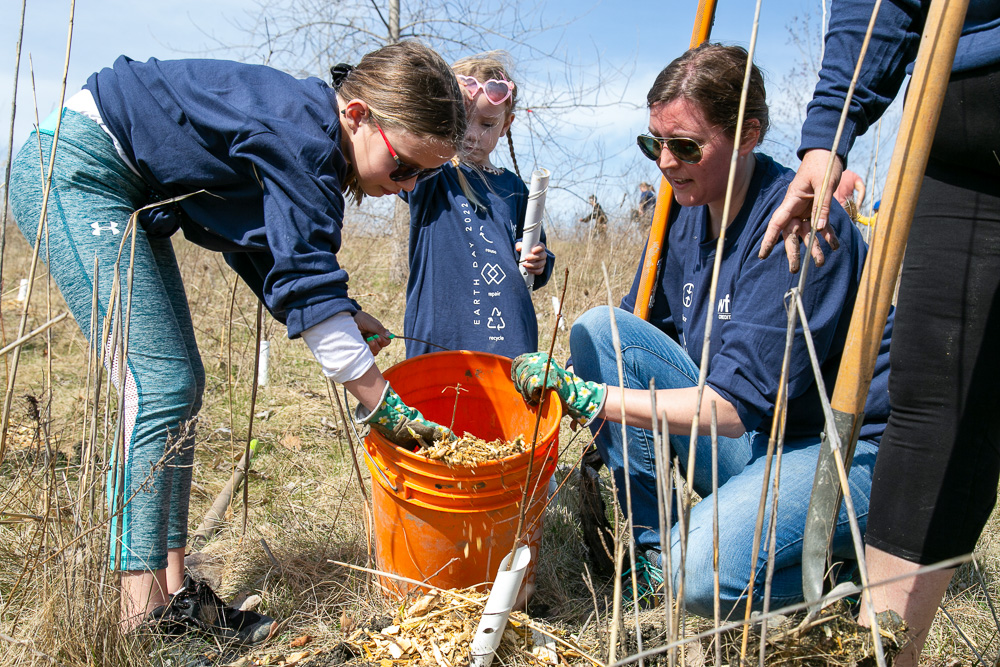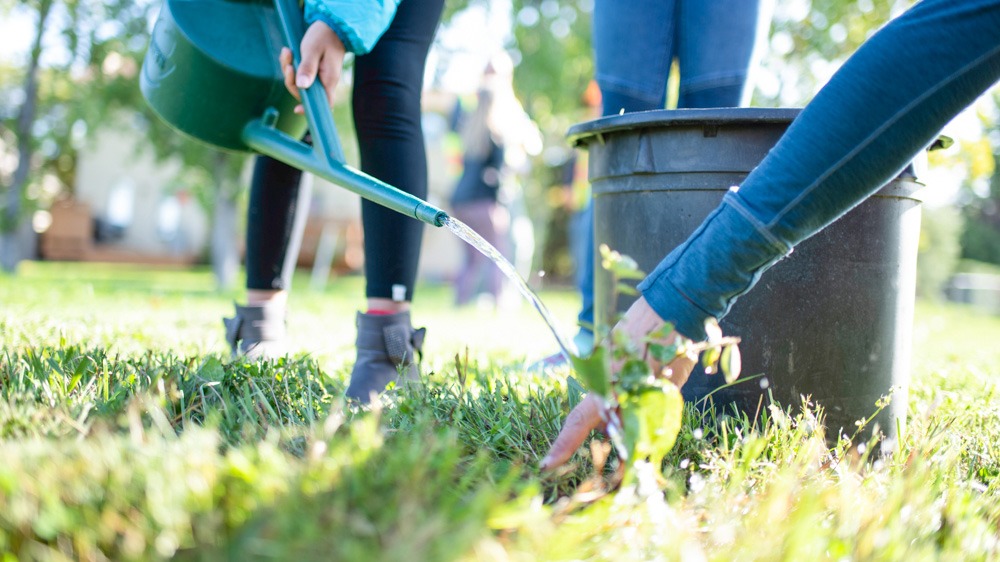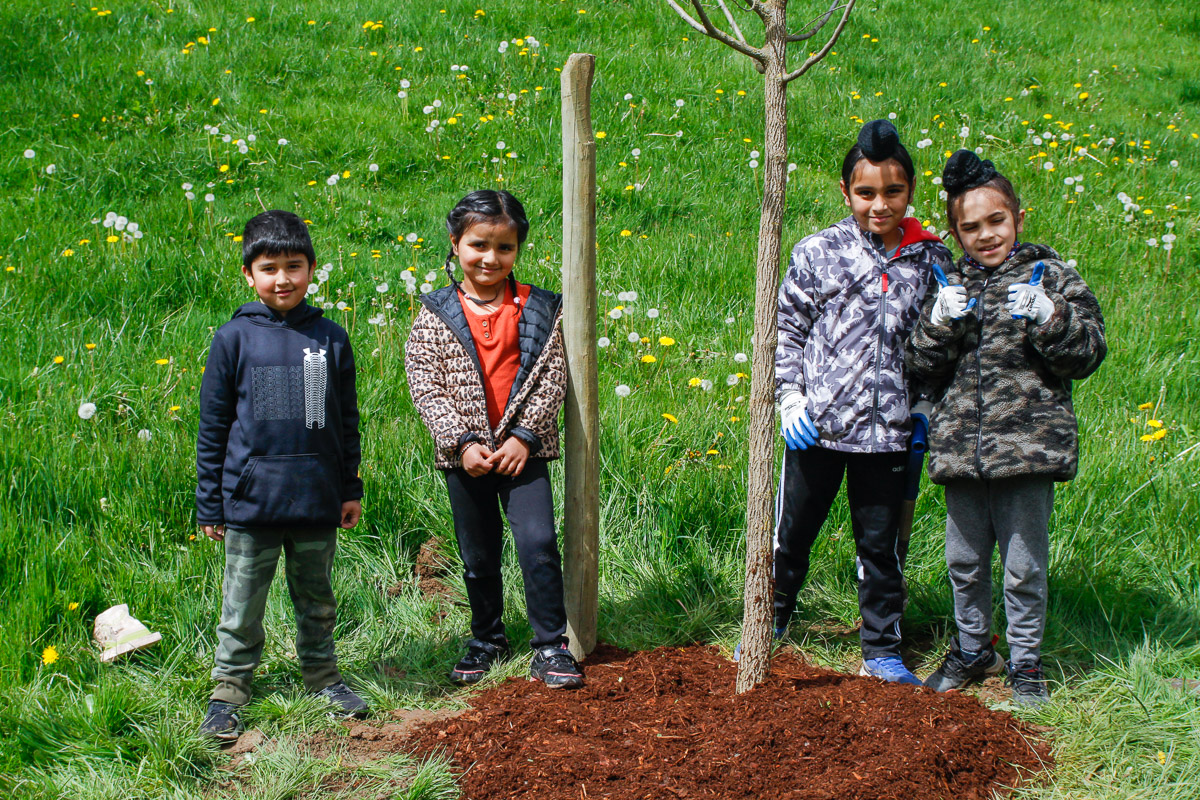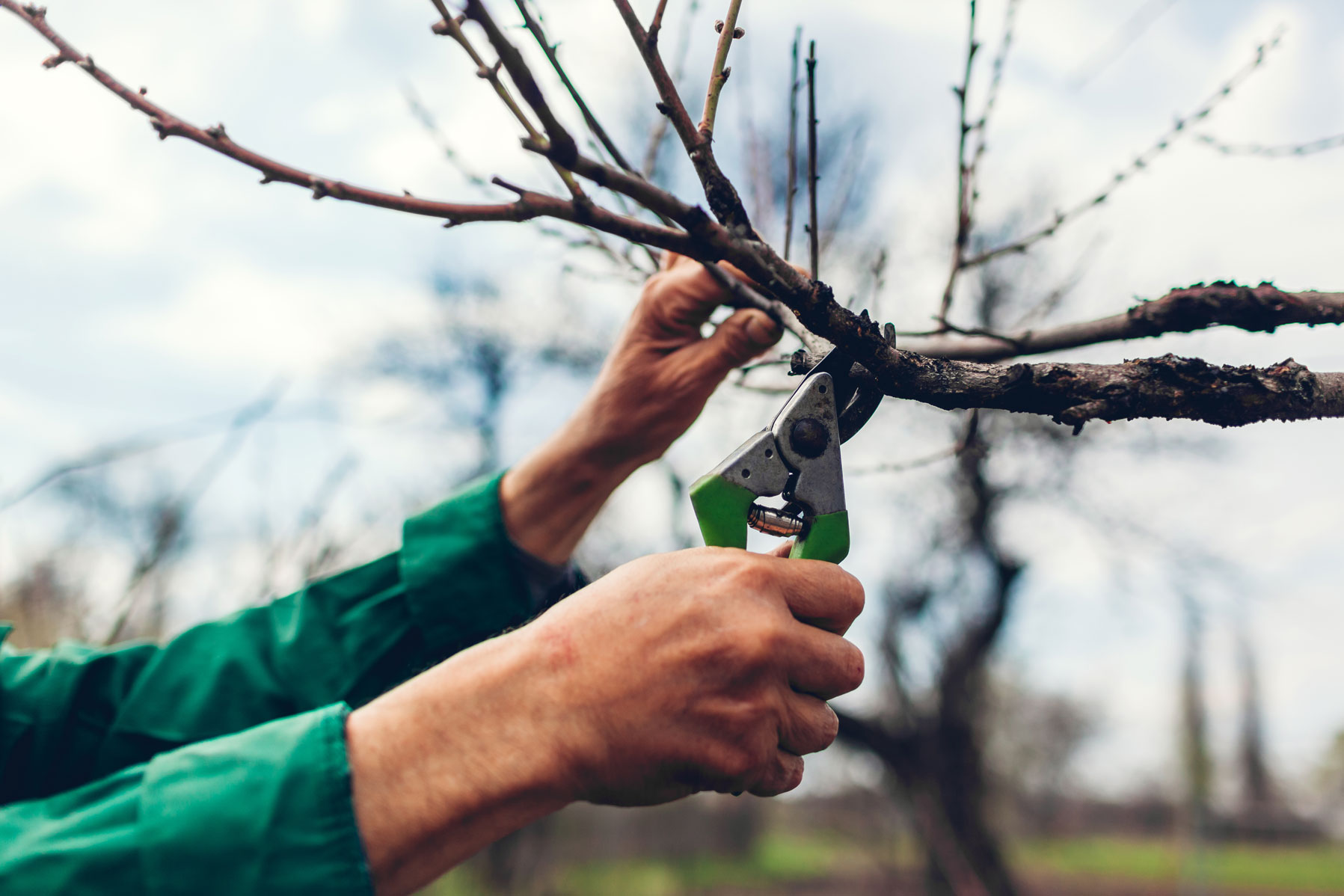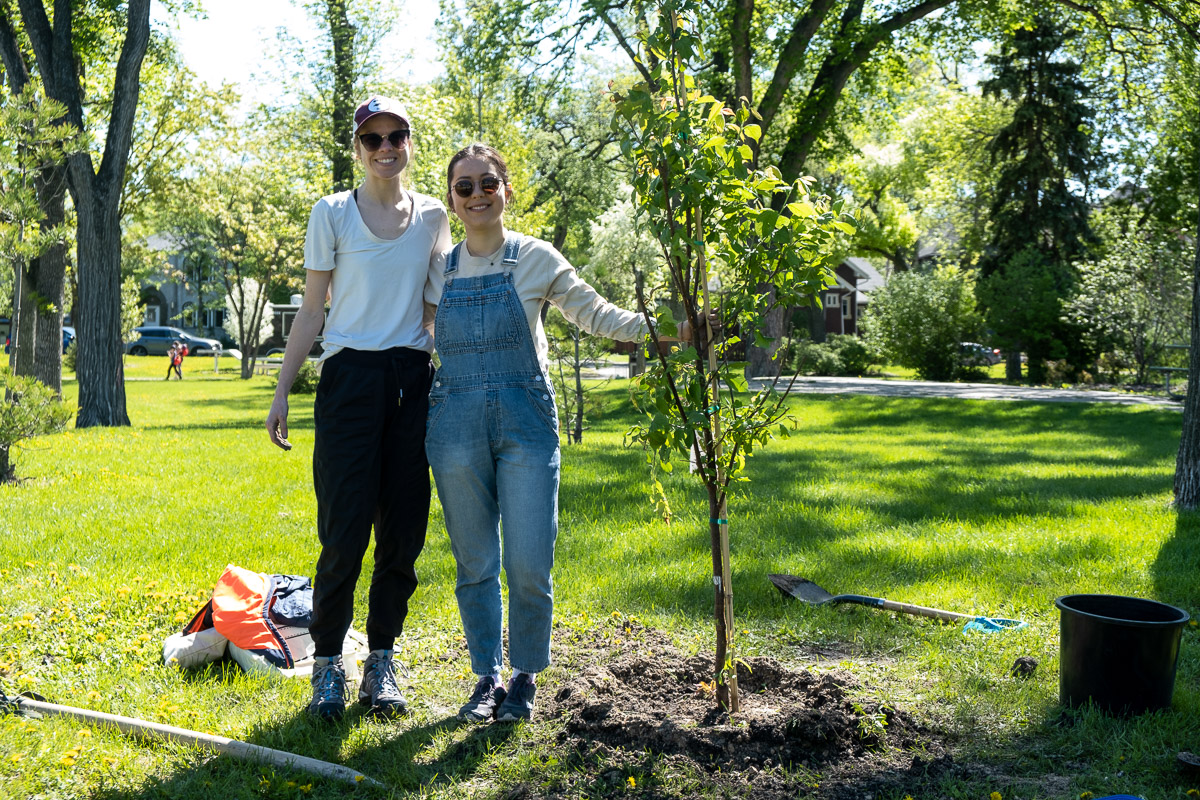Planting Steps
Follow these steps to minimize stress to your trees, prepare the planting spot and plant your tree with care:
Step 1: Dig a hole
- The hole should be two to three times wider than the container.
- Don’t dig too deep. Planting depth is very important and can often lead to premature tree death if incorrect.
- When placed in the hole, the tree’s root collar (i.e., where the roots join the main stem or trunk) should be flush with or slightly above ground level.
Step 2: Plant the tree
- For trees in containers, gently slide the root ball out of the pot and into the hole.
- Root balls should be loosened to discourage girdling. You can also roughen the sides and bottom of the hole to promote root penetration.
- For burlapped trees, place the root ball in the hole and gently cut away the wire basket and burlap.
- Plant the tree so that its root collar is flush with or slightly higher than ground level and the tree is vertical.
Step 3: Secure the tree
- Fill the hole in and around the root ball with the soil that was removed.
- Do not return any grass or sod to the hole.
- Gently pack the soil around the root ball until the hole is two-thirds full to remove air pockets.
- Fill the remaining space with water to settle the soil and allow the hole to drain.
- Finish filling the hole with soil and apply 5 cm of soil in a circle around the root area to direct water towards the roots.
